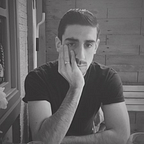Aesthetically functional
There’s always been that good old competition between humanities and engineering that basically establishes both realities as opposing worlds, as if culture and technology had nothing to do with each other. We make children choose and stand by their choices, treating the discipline they’ve not chosen with disdain. Well…
As an English philologist, working in an engineering position raises questions that have me trying to explain what I do and how I ended up doing this, so I’ll try my best in expounding the influence of my studies in my career. Studying literature has helped me get inspired and find my voice, therefore being able to convey any kind of message, including technical ones, more easily and comfortably. I’ve adopted all this knowledge as the key to understanding the cultural and linguistic mechanisms behind human reasoning, easing the process of translating complex concepts into understandable ones.
However, with a nine-year-older developer brother, my exposure to technology from an early age has also given me the opportunity to grow a naturally-receptive mind towards the more technical aspects of technical writing.
Art and technology have always come hand in hand and we should not treat them as two completely different entities. The difference between how stories are conveyed in the classical Greek play Oedipus Rex and Christopher Nolan’s Interstellar relies only in how technology has shaped culture and vice versa. This is the reason why we should not consider them two different worlds, as both are mere representations of the evolution of humankind and their mindset: Technology is broader than devices.
I see Technical Communication as a multichannel discipline to which the term “Technical Writing” seems to be insufficient. In order to communicate more precisely, there are four main properties I think are key in the production of good technical content:
- Currentness: In an evolving world, Technical Communication must evolve with it. It’s necessary to apply new techniques, channels and methodologies in order to not only produce documentation that is clear and accessible, but also up-to-date and contemporary.
- Humanity: Technical Communication is a job that must be kept human. It’s important to avoid sterile content, bigotry and pedantry as it would only have a negative effect, producing obscure material. There’s a reason why parents would rather have their children teach them how to use the apps in their phones.
- Properness: A bona fide use of linguistics in order to produce clear documentation. Technical Communicators should seek to master writing in general. People speak vernacular and manuals should too, being cryptic helps no one but one’s ego.
- Freshness: Users want to understand something better, not to be bored to death. Technical Communication should aim to be cool, interesting and rely on audio-visual aids. Giving importance to aesthetics and not producing dated materials are as important as producing clear content. No one wants to follow a boring manual.
The times of technical materials looking like Ikea manuals are long gone. Documentation must be attractive and logical so that readers don’t face it with the inherent predisposition of finding it a nightmare to read.
On top of all this, the interaction with developers must be greatly highlighted: no one knows their product better than them, and their contributions are gold: They write the script and produce the film, but it’s the technical communicators’ job to act it out and direct the scenes.
There are also some other basic notions that I have personally always applied to my work, either in teaching, Technical Communication or any artistic endeavour:
- Defying oneself: Following guidelines is good but to be a guidelines extremist is not so much so. Something that currently works will not probably work forever. Sticking blindly to certain procedures is pointless, there might be something that works even better.
- Developing one’s own style: It’s good to be aseptic and clear, but so it’s retaining your own voice. We all have that something that makes us unique, so make use of it. Except if you’re a Patrick Bateman kind of person, we may not want to see your uniqueness in that very case.
- Applying progress: It’s easy to get stuck in dusty concepts. There are new ways of presenting information every day and there’s a reason why people prefer watching a youtube tutorial rather than following a 10-sized Lucida Console 200-pages bible. Broaden your horizons when browsing for the best possible way to present something.
- Reinventing standards: It’s good to learn from what you’ve done and what you’ve been taught, but don’t be afraid to try new ways of conveying your message just because it’s not orthodox or standardised.
Of course, having all these principles in mind and being able to apply them to your daily life at the office sounds a bit utopical, but I’m glad to say it’s a journey I’ve been able to embark on at Feedzai. Well, glad may not even be the word, but happy. In the end, having the opportunity to improve oneself by being able to discuss, innovate and be creative is everything one could ask for while sitting in their office chair, isn’t it?
Finally, having in mind that only a literature student is pretentious enough as to end a post with a quote of a poem, do allow me to share this bit with you, as it wraps up everything that I have tried to convey:
“We shall not cease from exploration, and the end of all our exploring will be to arrive where we started and know the place for the first time”.
T. S. Eliot
If you are a terrifically functional aestheticist that wants to create, convey and produce technical content that aims to be nothing but remarkable, maybe you should have a look at our careers page and give Feedzai a try.
